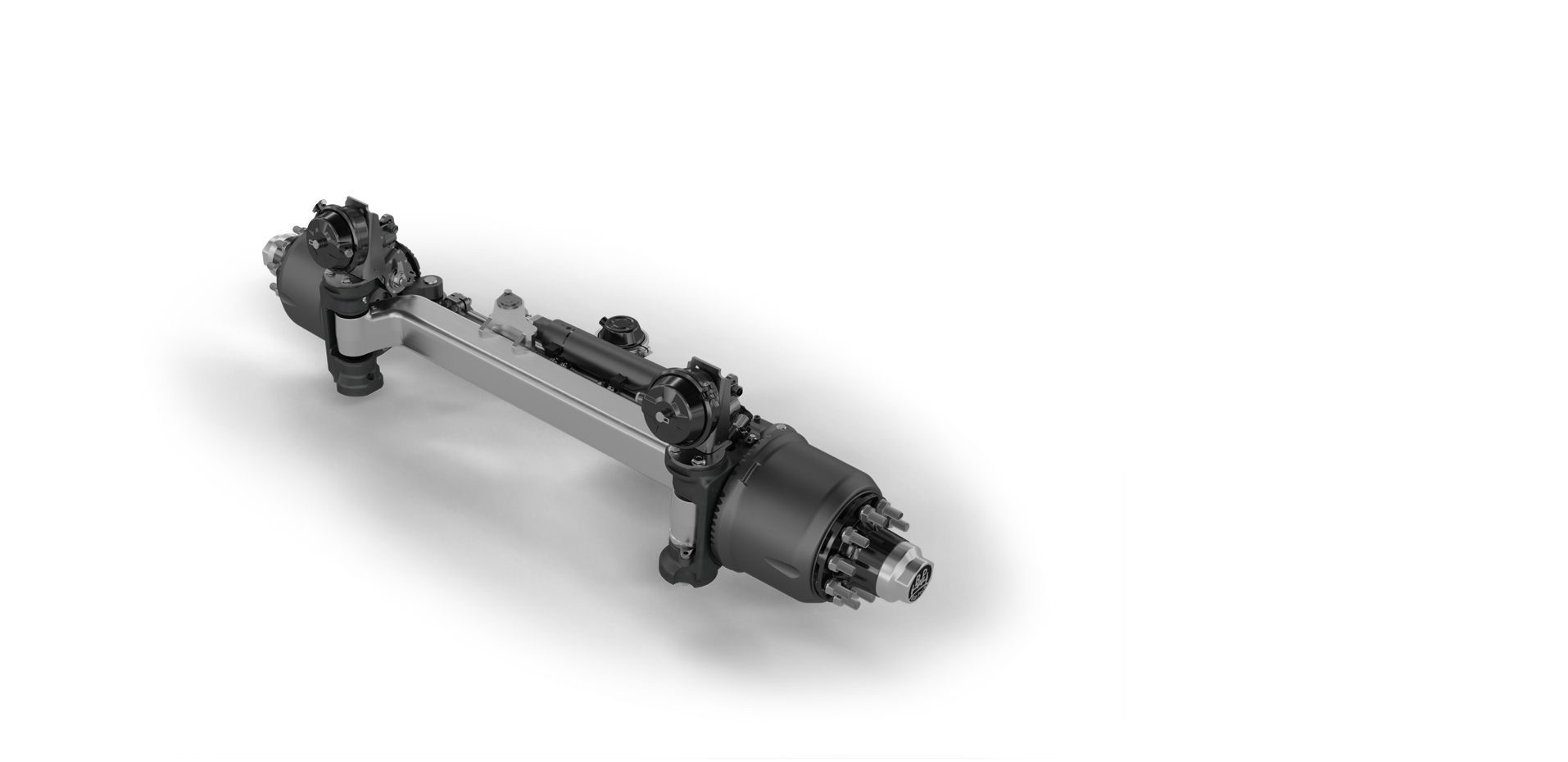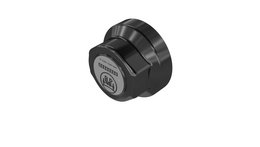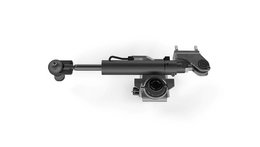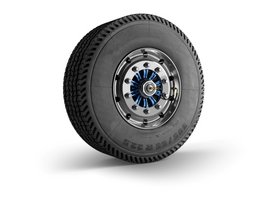
Steering axles
Steering axles from BPW demonstrate their strengths particularly in delivery and distribution haulage. Compared to a rigid axle, the trailer handles corners better.
Our new positively steered axles for the common electrohydraulic steering systems are delivered as standard with a welded holder for steering cylinders in order to allow easy assembly. A longer service life is achieved through the use of maintenance-free ball pivots on draglinks.
Due to their optimal manoeuvrability, self-steering axles reduce tyre wear and lower fuel consumption. The result is easier on your wallet.
Flexible steering in traffic
Steering axles from BPW demonstrate their strengths particularly in delivery and distribution haulage. Compared to a rigid axle, the trailer handles corners better.
Positive steering made easy
Our new positively steered axles for the common electrohydraulic steering systems are delivered as standard with a welded holder for steering cylinders in order to allow easy assembly. A longer service life is achieved through the use of maintenance-free ball pivots on draglinks.
Cost-efficient solution
Due to their optimal manoeuvrability, self-steering axles reduce tyre wear and lower fuel consumption. The result is easier on your wallet.
Features and benefits
- For axle loads from 6.4 t to 14 t
- Versions with disc or drum brake
- Lightest self-steering axle
- Steering stabilisation solely load-dependent
- Significantly lower and more even tyre wear: save more than 4 tyres over 100,000 km
- Significantly lower fuel consumption: up to 1,000 litres over 100,000 km
- Greater manoeuvrability, reduced transport space requirement, less expensive ramming damage
- Less strain on body, frame and road
- Exact tracking when changing lanes
- Particularly recommendable with the 44 tonnes regulation*
- Simplified installation thanks to optional 3-D trailing arm, no retracted frame required
- Permitted ratio of rigid axles to steering axles 1:1 (also applies with a lifted 1st axle in a 3-axle unit)
- Higher resale value
- Cataphoretic dip-coating
* 44 tonnes regulation according to § 34 (6) of the German Road Traffic Regulations (StVZO): ,,When an articulated vehicle (...) is transporting (...) a 40 foot ISO container, the gross weight rating is not allowed to exceed 44tonnes subject to the regulations for axle loads and single vehicles."
Product details

The economic miracle of all the BPW axles
The LL self-steering axle shows off its strengths particularly when tight manoeuvring is required in delivery and distribution haulage. Thanks to its greater manoeuvrability on corners and when making turns, you benefit from more straightforward vehicle handling, less tyre wear and lower fuel consumption – over a distance of 100,000 kilometres that adds up to as much as 1,000 litres of fuel saving and more than 4 tyres per vehicle. Just work that out for your entire fleet!

HOW THE LL SELF-STEERING AXLES WORK
LL stands for ‘load-dependant steering stabilisation’ and it describes the unique functional principle of the BPW self-steering axle. Conventional steering axle designs require steering stabilisers powered from an external source – this is not the case with the BPW self-steering axle. The axle beam and axle stub are connected to undulating thrust bearings via steering pivots. When driving straight ahead (zero position), the undulations in the thrust washers keep the wheels on track. The weight of the vehicle presses the undulating contours of the upper and lower thrust washers together. The wheels remain stable and aligned in the forward straight ahead position. When the semi-trailer follows the truck unit through a bend, the wheel castor ensures the wheels turn in accordance with the curve radius (the thrust washers slide over one another).

Greater manoeuvrability, reduced transport space requirement
The towing force changes according to the load on the axle. As a result, a steering angle of 8° to 27° (depending on the vehicle type) is established according to the load, and solely by mechanical control. The draglink connecting the wheels uses a steering lock to prevent the wheels from steering when the vehicle reverses.
The steering axle means that the unit corners better and follows the same track as the tractor unit almost identically. The lateral tyre forces that arise are optimally distributed between all the axles, for example in a 3-axle vehicle. As every axle experiences significantly lower lateral tyre forces, the mileage of the front axle increases by up to 50% – whereas the rear axle mileage increases by up to 70%.
The innovative auxiliary steering system, BPW Active Reverse Control, also provides steering functionality – and therefore trailer manoeuvrability – during reverse manoeuvres. The vehicle can therefore be manoeuvred quicker and automatically in reverse. Collisions can also be avoided!
Tyre mileage (km) in distribution haulage |
Fuel saving from BPW self-steering axle in proportion to mileage - |
Tyre consumption on a three-axle vehicle over 100,000 km, used in distribution haulage |
|








